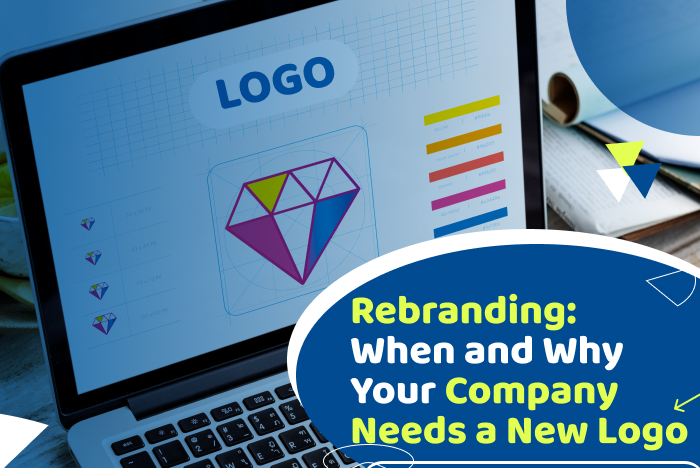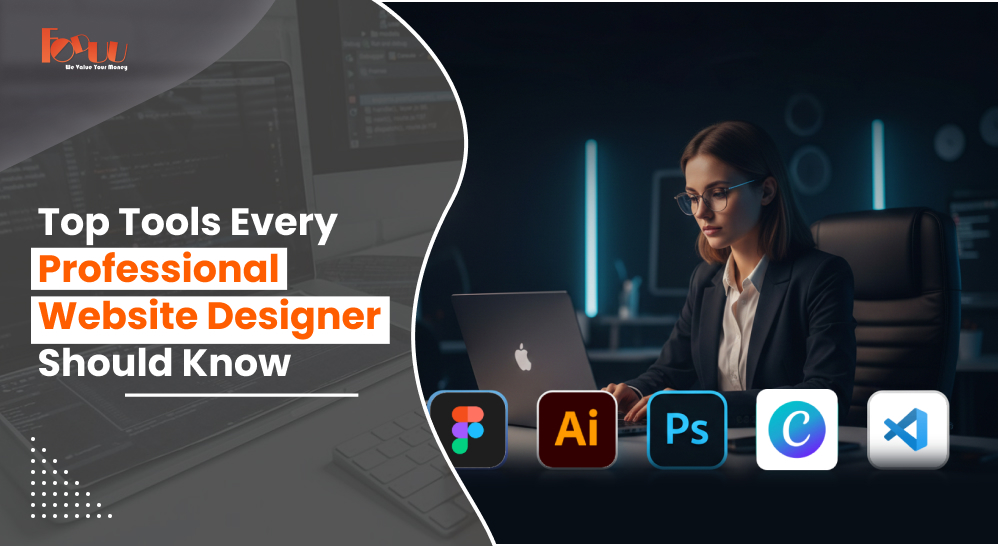A logo is far more than a decorative symbol; it acts as the visual foundation stone of your brand identity. It delivers your business's core values and creates an emotional connection in your audience while making them remember the brand for longer. The problem, however, with growing companies and changing markets is that sometimes, your logos may no longer reflect your current brand identity.
Rebranding and designing a new logo design can become a turning point in keeping relevant, resonating with the target audience, and making long-term success. In this article, we will analyze the key indicators that suggest a new logo is needed, reasons for rebranding, and how to have a successful logo redesign process.
Why a Logo Is Important
A logo is the face of your business. It often happens that this is the first thing customers remember and relate to your brand. An effective logo design
Creates Brand Recognition: An original and memorable logo lets customers remember your brand quickly across different mediums and channels.
Communicates Your Identity: A logo is a reflection of your business mission, values, and personality.
Sets You Apart: A powerful logo sets your business apart from others, making it easier for customers to choose you over others.
Boosts Customer Loyalty: Consistent branding, anchored by a logo, builds trust and loyalty over time.
Because of its importance, an outdated or poorly designed logo can undermine the effectiveness of your brand, and rebranding becomes necessary in some cases.
When to Get a New Logo
The appropriate time for changing a logo is significant. The following are the foremost events that indicate a time for change:
1. Business Change
Your business has outgrown its original vision, and the current logo no longer captures your brand's identity. This could be due to:
- Expansion of Product/Service Lines : Your business has broadened its scope in terms of products or services, but its existing logo doesn't capture that scope.
- Merging or Acquiring : A merger or acquisition creates the need for a unified brand identity.
- Entering New Markets : If you’re targeting a new demographic or geographic market, your logo may need to adapt to resonate with the new audience.
2. Outdated Design
Design trends evolve, and a logo that looked modern a decade ago may now appear outdated. Signs of an outdated logo include:
- Overuse of gradients or bevels.
- Fonts that are no longer trendy.
- A design that doesn't adapt well to digital mediums.
3. Rebranding Objectives
Your business is rebranding to redefine its mission, vision, or values. This means that the logo may need to be redesigned to reflect a new brand message or appeal to a new audience as well as reinforce a new beginning for the company.
4. Negative Perception
Your current logo may have negative connotations or represent old values, such as:
- Controversies or scandals.
- Inherently incompatible with contemporary cultural principles (e.g., diversity, sustainability).
- A brand identity that no longer aligns with your business mission.
5. Insufficient Scalability and Flexibility
Your logo is not versatile enough to apply various sizes, whether it is on the mobile device screen, social media profile icon, or printed material. A great logo should:
- Scale well in all sizes
- Recognizable even if in B&W or a single color.
- Versatile with a wide range of orientations.
6. Lower Emotional Resonance
It has lost the emotional connection desired of a target audience. More recently, logos have been highly conceptualized and simple enough in order to create powerful relations between a logo and a specific target market.
Why Your Business Needs a Logo
Logos are not for decorative changes, but rather for producing business-essential advantages that can grow or deteriorate your business image or enhance or worsen a consumer engagement. Here are the convincing reasons to adopt a new logo:
1. To Remain Relevant in Dynamic Markets
Markets are not static, and customer tastes and preferences change with time. A new logo keeps your brand up to date with:
- Contemporary design trends.
- Changing customer values.
- Industry innovations.
Tech companies, for instance, tend to update their logos with minimalism and digital-first sensibilities.
2. To Stand Out from Competitors
As industries become increasingly saturated, it becomes harder to stand out from the rest. A unique, modern logo helps you:
- Demonstrate your unique value proposition.
- Attract new customers who might otherwise choose competitors.
- Reinforce your distinct identity.
3. To Reflect Company Growth
Growth brings changes, whether in size, offerings, or mission. A redesigned logo communicates your evolution to stakeholders and customers, signaling:
- Professionalism.
- Innovation.
- Progress.
4. To Improve Brand Consistency
A redesigned logo ensures consistency across all marketing channels. A cohesive visual identity builds trust and strengthens your brand’s presence on:
- Social media platforms.
- E-commerce websites.
- Offline advertising materials.
5. To Attract New Audiences
A new logo can connect you to emerging demographics or markets. Aligning your logo with their preferences increases the chances of:
- Building rapport.
- Encouraging brand loyalty.
- Growing your customer base.
Also Read: How Much Does a Logo Design Cost in India
Steps to a Successful Logo Redesign
A logo redesign is a process that requires strategic planning for success. Here are the steps to create a new logo that resonates with your audience and strengthens your brand:
1. Assess Your Current Logo
Begin with analyzing the strengths and weaknesses of your current logo. Think about the following questions:
- Does it represent my brand's identity?
- Is it memorable and versatile?
- What has customer feedback been like?
2. Define Your Objectives
Identify why you want to redesign your logo. Are you looking to:
- Update your design?
- Appeal to a new market?
- Indicate a rebrand?
Well-defined objectives will steer the design process and keep it on track.
3. Know Your Audience
Research your audience to understand their preferences and expectations. Consider factors such as:
- Age and demographics.
- Cultural influences.
- Design preferences.
4. Collaborate With Professionals
Hiring a professional logo designer or agency ensures:
- High-quality design.
- Strategic alignment with your brand.
- Expertise in typography, color theory, and trends.
5. Simplify and Streamline
Modern logos prioritize simplicity. A minimalist design is:
- Easier to recognize.
- More versatile across platforms.
- Timeless and less prone to becoming outdated.
6. Test and Gather Feedback
Before finalizing your logo, test it with stakeholders and customers. Collect feedback on:
- Emotional impact.
- Scalability and clarity.
- Alignment with your brand's identity.
7. Roll Out Your New Logo Strategically
Plan a phased rollout of your new logo to ensure consistency across all touchpoints. Announce the change through:
- Press releases.
- Social media campaigns.
- Updated marketing materials.
Successful Examples of Logo Redesigns
Learning from successful logo redesigns may inspire and inform your own. Here are a few of the most interesting examples:
1. Apple
Apple changed from a detailed illustration of Isaac Newton to the now-famous minimalist apple with a bite. It was a change that meant simplicity and innovation, representing their product philosophy.
2. Google
Google changed from a serif typeface to a clean, sans-serif font. This change reflected their modern, user-friendly approach.
3. Pepsi
Pepsi has changed the logo several times to remain up-to-date. Their latest design focuses on a clean and global look.
Challenges and Considerations
- Logo changes are not without their issues. Be prepared to handle:
- Resistance to Change: There is an emotional attachment to the previous logo by customers and stakeholders.
- Costs: Designing and launching a new logo costs money.
- Consistency: A smooth changeover on all platforms takes careful planning.
Conclusion
A logo can be a perfect transformative move for your company. Be it in the modernization of the brand, appealing to a new audience, or after massive growth, a well-implemented redesign of the logo increases your business's identity and competitiveness. By ascertaining a need for change, clearly defining goals, and consulting professionals, you'll have a logo that captures your audience's attention and stands for what your brand envisions.
If you're looking for a professional logo design company in India that offers custom logo design services for startups and small medium businesses, reach out to us today. We at FODUU specialize in creating unique, impactful logos tailored to your brand's identity and vision.




